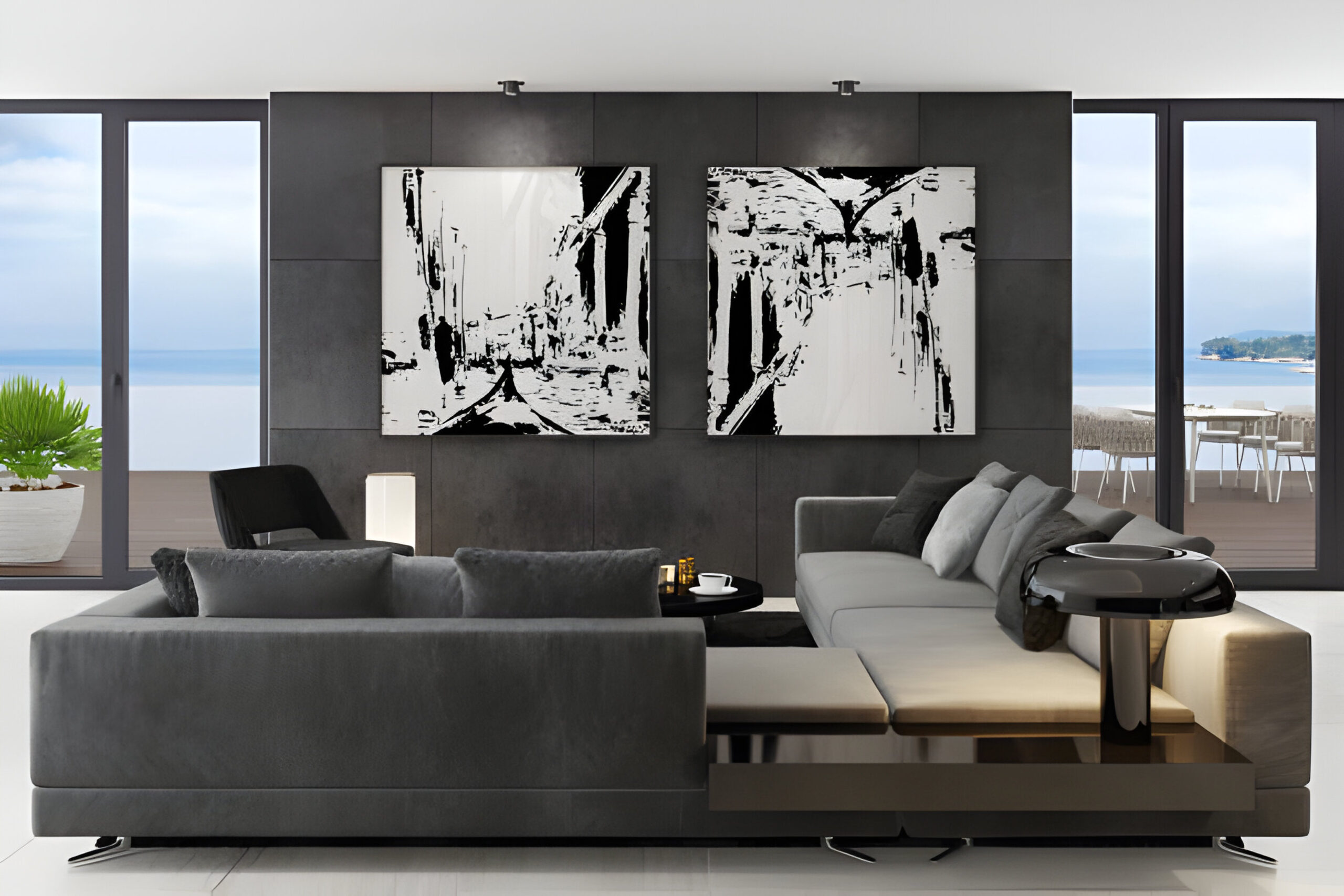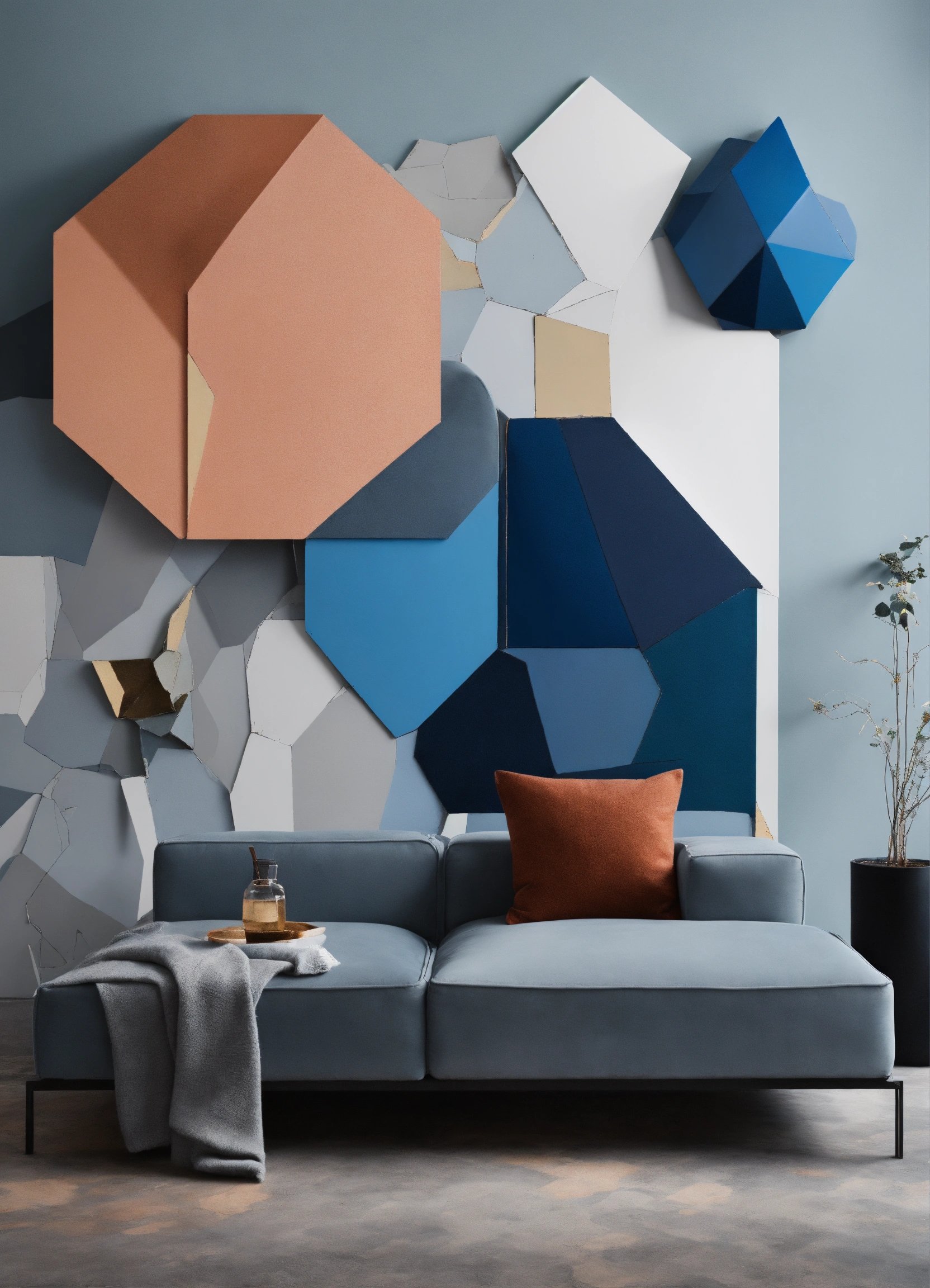
Introduction
Are you looking for a fun and creative hobby? Easy canvas painting might be just what you need! This guide will walk you through everything you need to know to get started with easy canvas painting, from choosing the right materials to mastering basic techniques. Whether you’re a complete beginner or looking to refine your skills, you’ll find helpful tips and inspiration here.
Table of Contents
Why Choose Easy Canvas Painting?
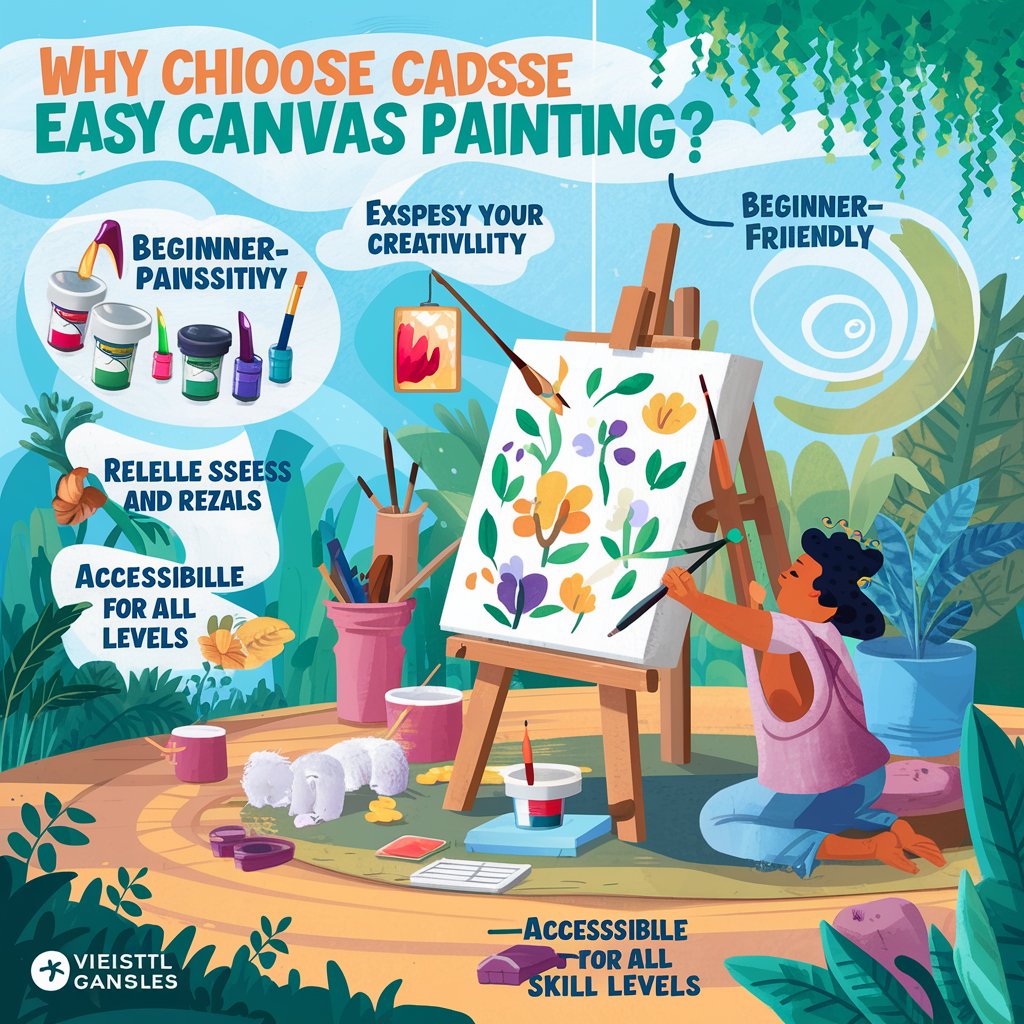
The Joy of Creating Art
Easy canvas painting allows you to express your creativity in a tangible form. There’s something incredibly satisfying about transforming a blank canvas into a beautiful piece of art.
Stress Relief and Relaxation
Painting can be a meditative activity that helps reduce stress and promote relaxation. The focus required for painting can help clear your mind and provide a break from daily worries.
Accessible for All Skill Levels
You don’t need to be an experienced artist to enjoy easy canvas painting. With simple techniques and some practice, anyone can create beautiful artwork.
Essential Materials for Easy Canvas Painting
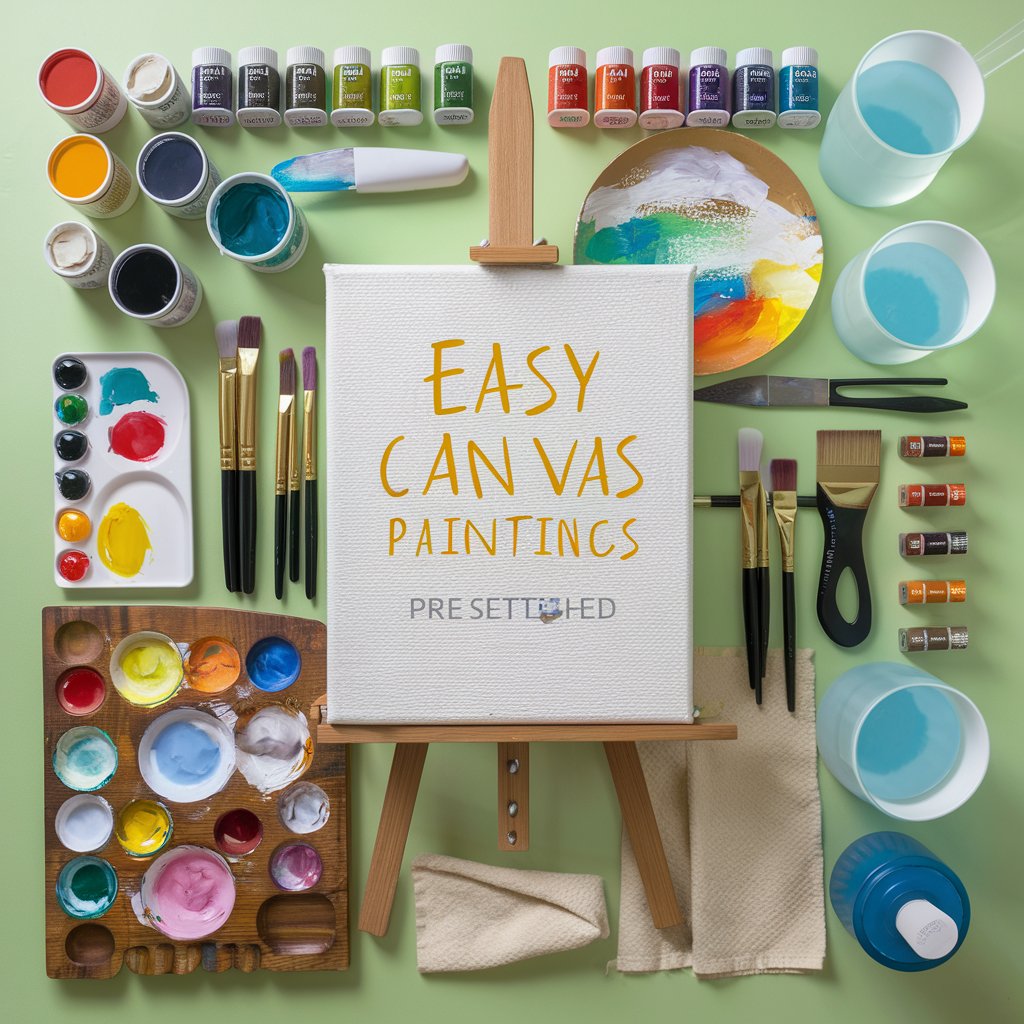
Canvas
The canvas is your painting surface. Canvases come in various sizes and types, but for easy canvas painting, starting with a pre-stretched, primed canvas is recommended.
Paints
Acrylic paints are a popular choice for beginners due to their fast-drying nature and ease of use. They come in a variety of colors and may be readily combined to produce unique tones.
Brushes
Different brushes serve different purposes. Round brushes are ideal for fine detail work, and flat brushes work well for wide strokes. Investing in a basic set of brushes will cover most of your needs.
Palette
A palette is used for mixing paints. You can use a traditional wooden palette, a disposable paper palette, or even a plate.
Easel
An easel holds your canvas upright while you paint, making it easier to see your work and maintain good posture.
Other Supplies
Don’t forget rags or paper towels for cleaning brushes, water containers for rinsing brushes, and a palette knife for mixing paints.
Setting Up Your Painting Space
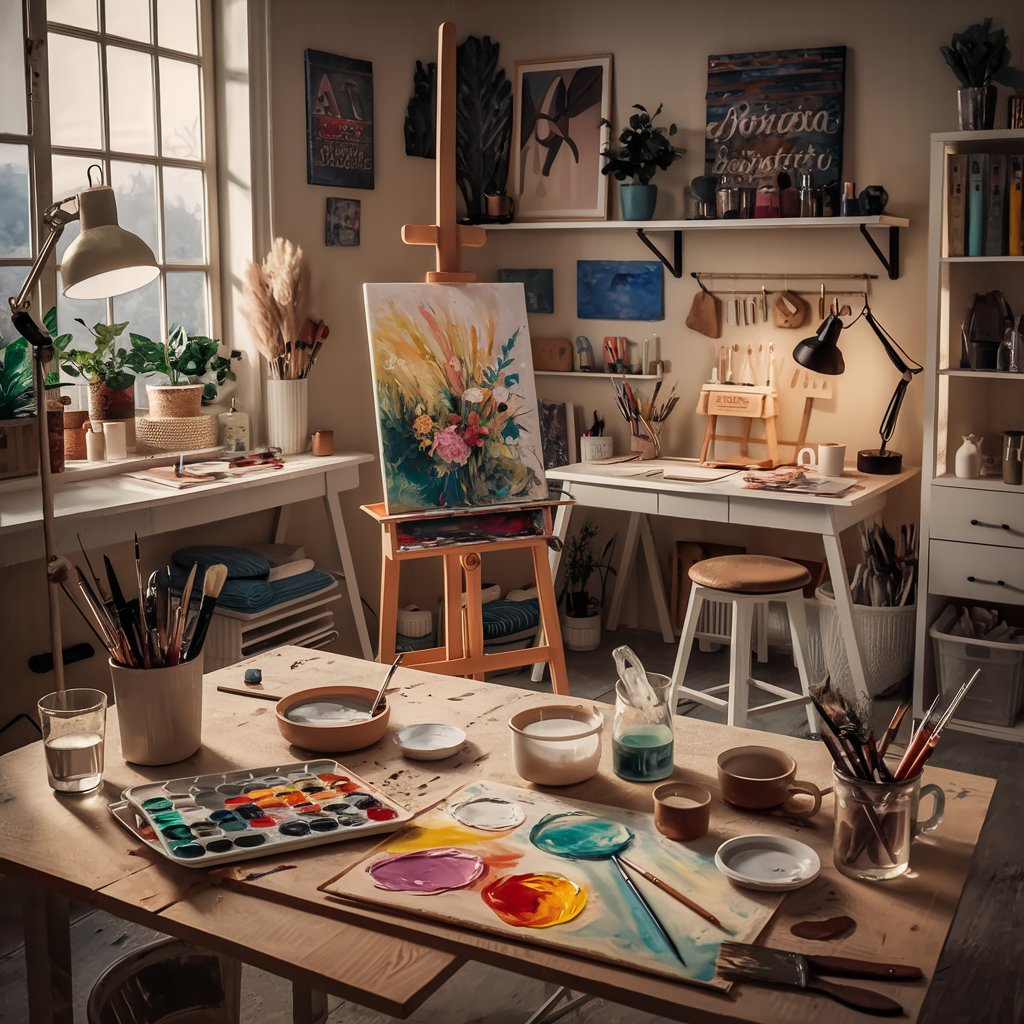
Choose a Well-Lit Area
Good lighting is crucial for painting. If you can’t get enough natural light, make sure you have enough artificial light.
Organize Your Materials
Keep all your materials within easy reach. This setup will help you maintain your workflow without unnecessary interruptions.
Protect Your Workspace
Lay down a drop cloth or old newspapers to protect your workspace from paint spills and splatters.
Basic Techniques for Easy Canvas Painting
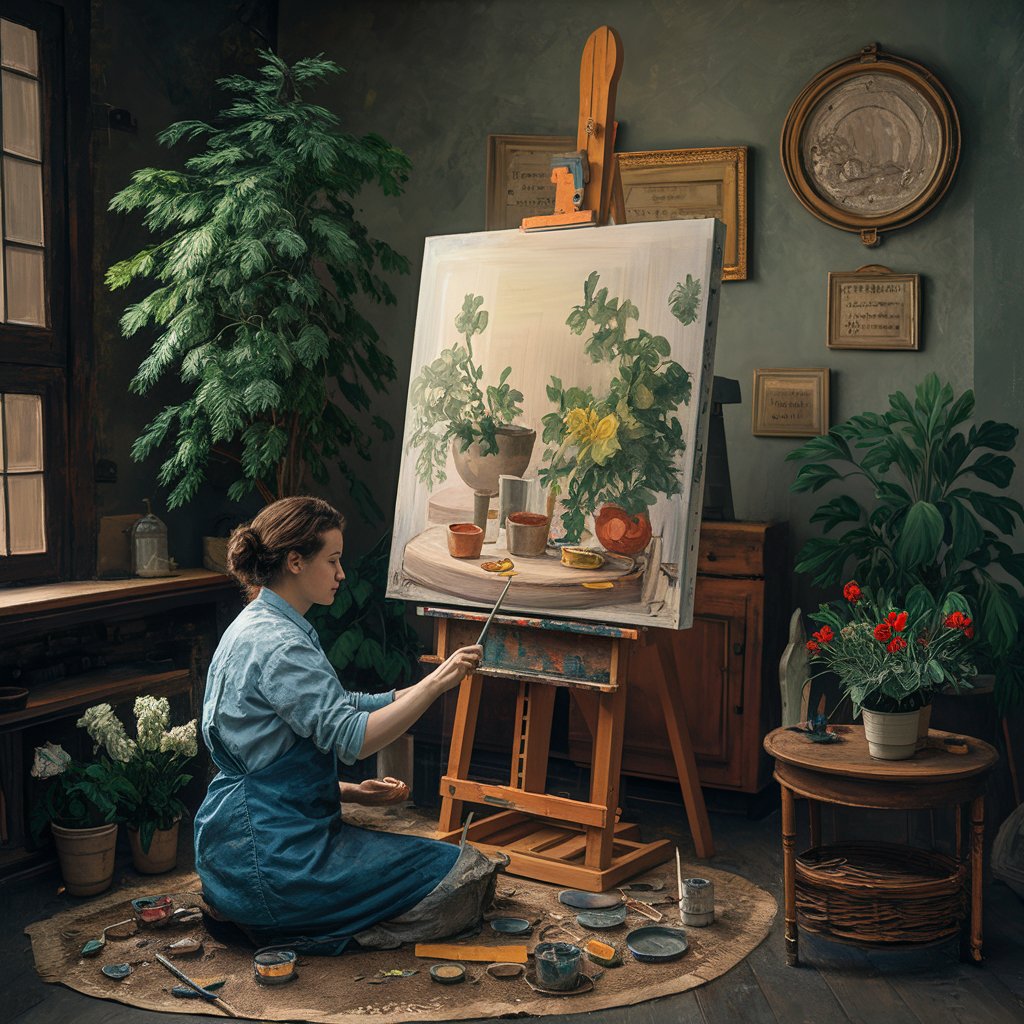
Priming the Canvas
Even if your canvas is pre-primed, adding an extra layer of gesso can improve the texture and absorbency of the canvas.
Underpainting
Underpainting involves creating a monochromatic sketch on the canvas before adding the main colors. This technique helps establish the composition and values.
Blocking In
Blocking in refers to painting the main shapes and colors without focusing on details. This step lays the foundation for your painting.
Layering
Adding layers of paint to your artwork can give it richness and depth. Allow the previous coat to dry completely before applying the next layer.
Blending
Blending is the process of seamlessly shifting between colours. Using a dry brush or a blending medium can help achieve this effect.
Detailing
After the main colors and shapes are in place, add details to refine the painting. Use smaller brushes for this step.
Step-by-Step Easy Canvas Painting Tutorial
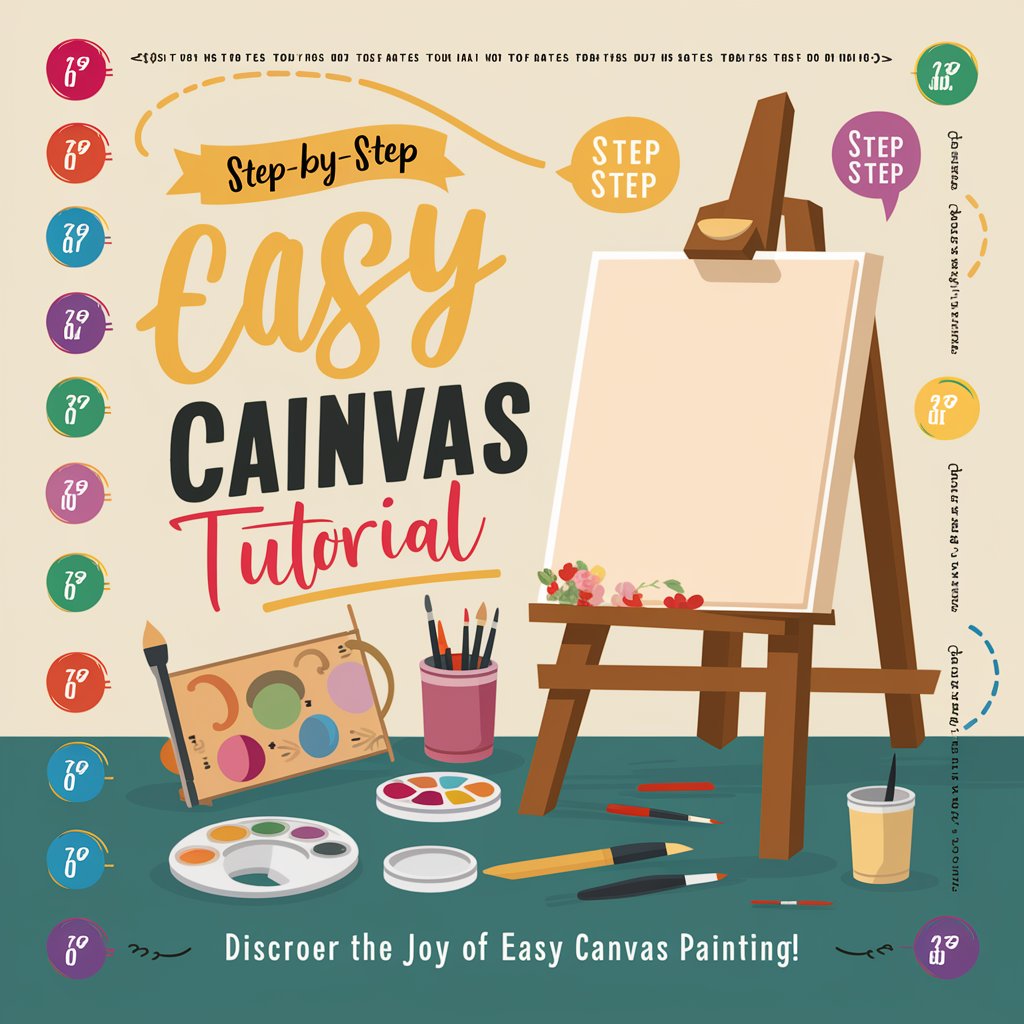
Step 1: Gather Your Materials
Before you begin, make sure you have all of the things you will need.
Step 2: Set Up Your Workspace
Organize your painting space and prepare your canvas by priming it with gesso.
Step 3: Sketch Your Composition
Using a light pencil, sketch your composition on the canvas.
Step 4: Apply the Underpainting
Create a monochromatic sketch using a single color thinned with water.
Step 5: Block In the Main Colors
Paint the main shapes and colors without focusing on details.
Step 6: Build Up Layers
Add layers of paint to create depth and richness in your artwork.
Step 7: Blend Colors
Use a dry brush or blending medium to smoothly transition between colors.
Step 8: Add Details
Refine your painting by adding details with smaller brushes.
Step 9: Let It Dry
Give your artwork enough time to dry completely before shifting or hanging it.
Common Mistakes to Avoid in Easy Canvas Painting
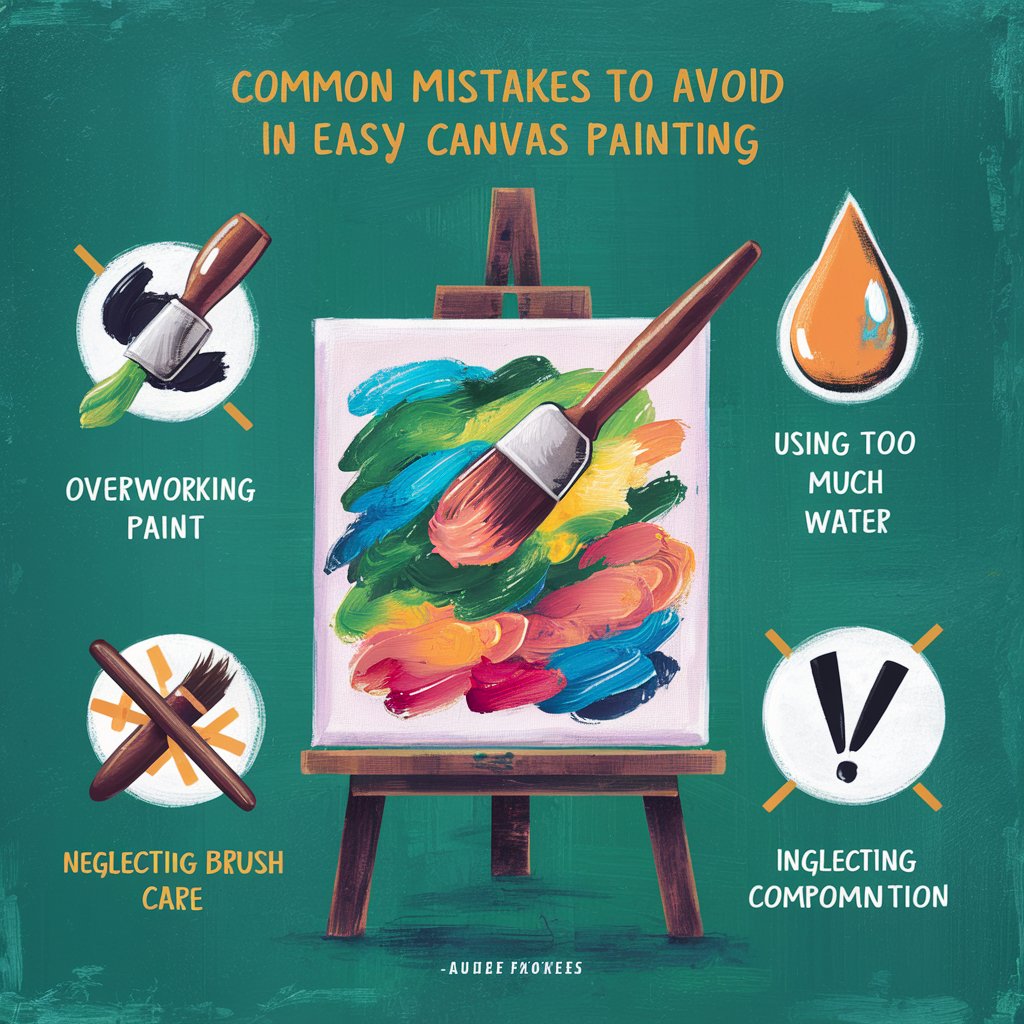
Overworking the Paint
Avoid overworking the paint, as it can result in muddy colors and a lack of vibrancy.
Using Too Much Water
Using too much water with acrylic paints can dilute the pigments and reduce their opacity.
Neglecting Brush Care
Properly clean your brushes after each use to maintain their shape and longevity.
Ignoring Composition
A well-thought-out composition is crucial for a successful painting. Plan your composition before starting.
Advanced Tips for Easy Canvas Painting
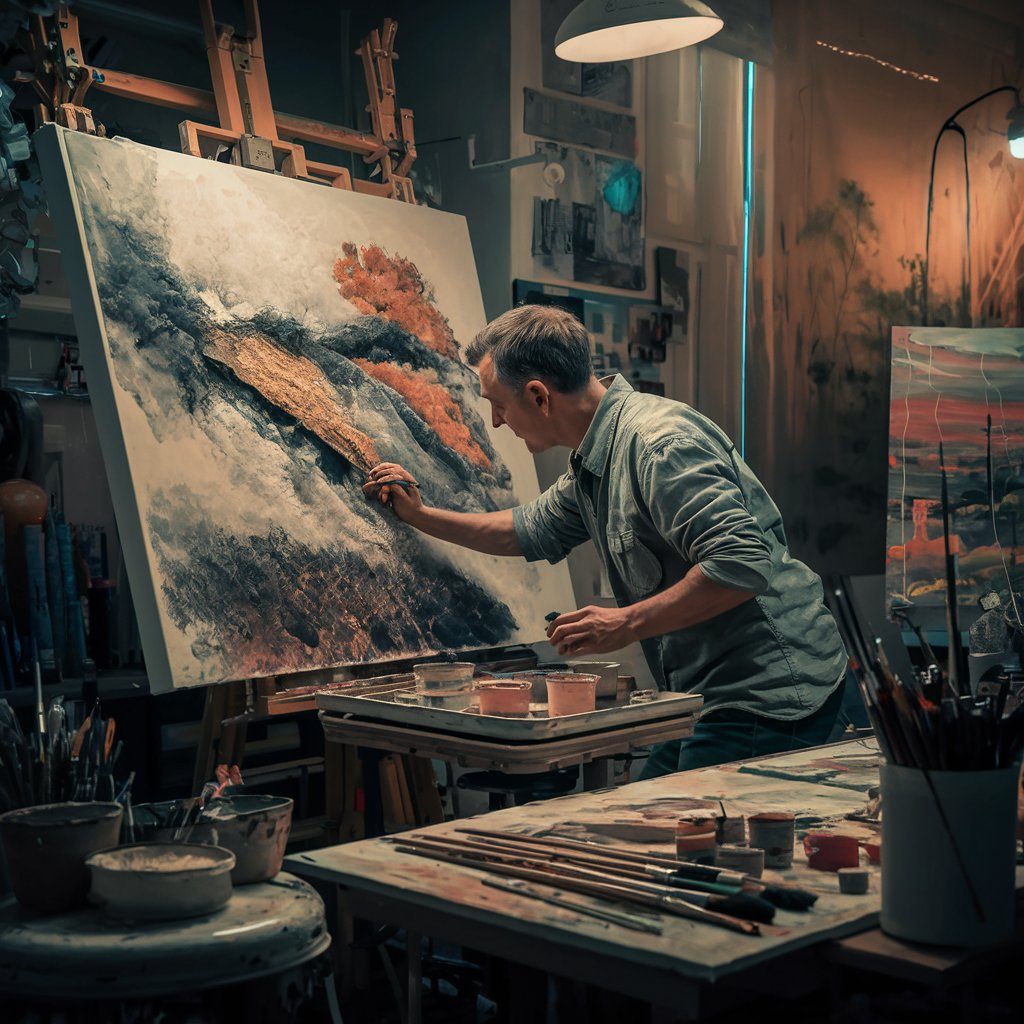
Experiment with Techniques
Try experimenting with new methods and supplies without fear. Experimenting can lead to unique and exciting results.
Use References
References, such as photos or real-life objects, can help you create more accurate and detailed paintings.
Play with Textures
Incorporate different textures into your painting to add interest and depth.
Practice Regularly
The more you paint, the better you’ll become. Set aside regular time for painting to improve your skills.
Frequently Asked Questions About Easy Canvas Painting
What is the best paint for beginners in easy canvas painting?
Acrylic paints are the best choice for beginners due to their fast-drying nature and ease of use.
How do I choose the right canvas size for easy canvas painting?
Start with a medium-sized canvas, such as 16×20 inches, which is manageable for beginners.
Can I paint over a mistake in easy canvas painting?
Yes, acrylic paints allow you to paint over mistakes once the paint has dried.
How can I create smooth blends in easy canvas painting?
Use a dry brush or blending medium to create smooth transitions between colors.
Do I need to use an easel for easy canvas painting?
While not necessary, an easel can make painting more comfortable and help maintain good posture.
Conclusion
This detailed guide provides a comprehensive overview of easy canvas painting, ensuring that beginners have all the information they need to get started. By following these steps and tips, anyone can create beautiful canvas paintings and enjoy the therapeutic benefits of this creative hobby.

